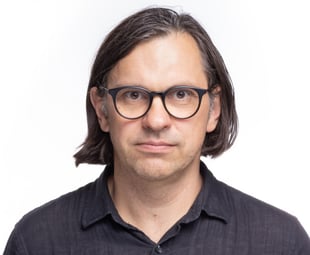

ANIMAFEST PRO | ANIMAFEST SCANNER XII | PANEL 2: CURRENT TECHNOLOGICAL DEVELOPMENTS IN ANIMATION
The Representation of Water in Latvian Animated Films: Technological and Aesthetic Aspects - EDMUNDS JANSONS
PANEL 2 - CURRENT TECHNOLOGICAL DEVELOPMENTS IN ANIMATION
03/06 TUE 15:55-16:25 KIC
The rapid advancement of digital technologies has significantly influenced the creative processes of both animation production and individual authors, leading to transformations in film aesthetics. "The Representation of Water in Latvian Animated Films: Technological and Aesthetic Aspects" is an excerpt from a broader study analyzing the last 30 years of Latvian animation history—a period marked by radical shifts in filmmaking. This era saw a transition from analog to digital cinema, the decline of large-scale film studios, and the rise of small independent studios and individual creators. The study examines these developments within the continuum of technological progress. Water, as an element in animated films, presents both creative and technological challenges. Its representation involves depicting its fluid nature, constant variability, and the complex interaction of light and textures in motion. Depending on the chosen animation technique and intended meaning, different approaches to representing water can be identified: Material water animation – the use of unconventional materials such as rotating papier-mâché rollers, felt, glass, and watercolor on film to depict water. Stylized water animation – visually experimental techniques where water is represented symbolically or abstractly rather than realistically. Digital water simulations – the use of physics-based modeling to create plausible water motion. Notably, the imagery of the sea and water is a recurring motif in the works of nearly all Latvian animation artists. From the underwater world illustrated by Roze Stiebra and Ansis Bērziņš in Latvia’s first animated feature film "Ness and Nesija", to the rotating papier-mâché cylinder sea in Arnolds Burovs "Vanadzins", and further to the contemporary digital ocean in Gints Zilbalodis’ Flow, created using the Physical Open Waters real-time simulator addon for Blender. These works provide not only a panoramic view of Latvian animation but also a sequential representation of technological advancements in media art, reflecting broader global trends.
Edmunds Jansons (1972) is animator, director, illustrator and founder of the animation film studio Atom Art. He studied TV directing at Latvian Academy of Culture, graduated MA at Estonian Academy of Art - the masterclass by Priit Pärn in 2012. In 2024 he finished professional doctoral studies in Art Academy of Latvia. His filmography notably includes the animated documentary film Little Bird's Diary (2007); the animated shorts Choir Tour (2012), The Isle of Seals (2014), Guard of Honour (2021), Freeride in C (2024), pre-school series Shammies, and 25-min Christmas story Pigtail and Mr. Sleeplessness. Jacob, Mimmi and the Talking Dogs (2019) is his first feature film and currently he is working on his next feature “Born in the jungle”. Since 2013, Edmunds has been teaching animation directing at the Academy of Arts of Latvia. In addition to his main line of work, Edmunds is a recognized and beloved children’s book illustrator.


